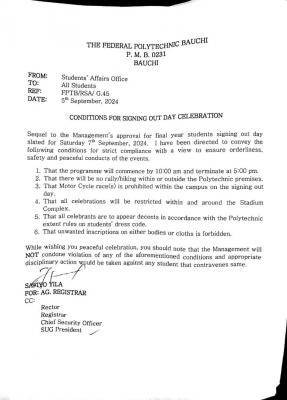
As a student or an independent researcher who is about to engage in a specific research work, it could be a master’s degree thesis, a PhD dissertation or just writing on a specific subject matter for publication, it is most certain that you would include a literature review in your work. So, let’s assume for the sake of this article that you are a newbie to research and you are not yet conversant with the structure of a thesis/dissertation, then you have come to the right place because this article is aimed at helping young scholars understand what literature review is and what it really means in research. So let’s start by defining Literature review.
What exactly is a Literature Review?
A literature review is an evaluation of the body of literature on a specific topic. It guides the audience up to speed on the set of opinions and knowledge that has been established on a topic, classifying contrasting and opposing points of view as well as any gaps in current knowledge.
What then does it mean to “Review”?
A review of literature is much more than just a list of relevant sources. The act of reviewing entails evaluating individual sources as well as synthesizing these sources in order to gain a broad understanding of the field.
A literature review discusses common and emerging approaches, notable patterns and trends, areas of conflict and controversies, and gaps in the relevant literature at this ‘field level. When you are able to clearly observe these things, you will be able to situate your own research and contribute to ongoing debates in the field.
In other words, when reviewing the literature, “you must not only engage with a body of literature, but you must also be able to compare, contrast, and “synthesize and argue with that literature in ways that show a willingness to contribute to the literature itself” (Elvis, 2010, p.81).
While the term field is used in this module, please keep in mind that some literature reviews cover multiple fields of study.
Step 1: Decide on a Topic
You may be assigned a topic or asked to come up with your own. If you choose your own topic, make sure there is enough relevant literature to write a literature review on for your own topic.
Step 2: Locate Relevant Texts
- As part of the exercise, you may be given a number of books or articles to review, or you may be expected to conduct your own research. Identify databases recommended by your subject librarian for your subject, such as CINAHL or PubMed for Health Sciences or Nursing.
- Conduct keyword searches to locate relevant books and articles. Examine your results.
- Scrutinize them to determine which ones you need to include in your literature review. Choose an appropriate number of studies depending on the amount of the literature review you are supposed to write.
Step 3: Conduct a study Analysis
- Take into account the following:
- Examine the author’s credentials.
- Determine the study’s purpose: what does the study assert to prove?
- Is the evidence provided sufficient to support the claim?
- Is the research conducted using quantitative, qualitative, or both methods?
- Is the study flawed in any way?
- Is the focus group representative of the population being studied?
- Is there proof of bias?
Step 4: Write the review
- Consider organizing the review chronologically, thematically, or methodologically.
- As you read through the literature, try to identify themes or issues that link your sources together if you are organizing your review thematically.
- Like essays, most literature reviews have an introduction, a body, and a conclusion.
INTRODUCTION:
The introduction ought to be clear and brief, providing an overview of the research, your justifications for writing the review, a description of the scope of the review, what you intend and do not intend to include, and the review’s sequence or order.
THE BODY OF THE TEXT
This part summarizes and synthesizes the literature.
You should sum up and analyze material in a way that allows you to compare, contrast, critically review, and comment on what has been said in the literature as well as report on it.
Each work must be evaluated for similarities, differences, strengths, and weaknesses.
CONCLUSION:
In the conclusion, you provide a brief description of what is available on the topic while also identifying gaps.
So here we have been able to talk about what literature review is and what makes up the literature review. So now, you understand it and you are eager and ready to start working on your thesis/dissertation, so you don’t lose more time than you already have, so the next question is, how do I draft or go about writing my own literature review?
How Do I write a Literature Review?
Once you’ve decided how to organize your literature review, you can begin writing each section. Keep these issues in mind as you write your review.
1) Make Use of Evidence
In this sense, a literature review section is similar to any other academic research paper. Your interpretation of the available sources must be supported by evidence (citations) that shows that what you are saying is the right thing.
2) Choose Wisely
To highlight in the review, choose only the most important points from each source. The information you include should be directly related to the research problem, whether it is methodological, thematic or chronological. A list of further readings can include related items that provide additional information but are not critical to understanding the research problem.
3) Summarize and Synthesize
Remember to summarize and synthesize your sources throughout the review, as well as within each thematic paragraph. Recapitulate key aspects of a research study, but then synthesize it by rephrasing the significance of the study and relating it to your own work.
4) Maintain Your Own Voice
Although the literature review provides the ideas of others, your [the writer’s] voice should be front and center. For example, incorporate citations from other sources into your writing while maintaining your own voice by beginning and ending each paragraph with your own ideas and wording.
5) Quotes Should be Used Sparingly
If you want to emphasize a point or if what an author said cannot be easily paraphrased, some short quotes are acceptable. You may need to quote terminology that was coined by the author, was not common knowledge, or was taken directly from the study at times.
Do not rely on lengthy quotations to replace your own summary and interpretation of the literature.
6) When paraphrasing, use caution
When paraphrasing information or opinions from a source other than your own, make sure to represent the author’s information or opinions accurately and in your own words.
Even if you are paraphrasing an author’s work, you must still provide a citation to that work.
Literature Review types
There are types of literature and for the purpose of this article, we shall be discussing a good number of them;
1) Methodological Analysis
A review doesn’t often fixate on what someone said (findings), but about how they said it (method of analysis).
Reviewing methods of analysis provides a framework of understanding at various levels i.e. those of theory, substantive fields, research approaches, and data collection and analysis techniques] of how researchers draw on a wide range of knowledge ranging from the conceptual level to practical documents for use in fieldwork in the areas of epistemological and Methodological Analysis
A review doesn’t often fixate on what someone said [findings], but about how they said it [method of analysis].
Reviewing methods of analysis provides a framework of understanding at various levels [i.e. those of theory, substantive fields, research approaches, and data collection and analysis techniques] of how researchers draw on a wide range of knowledge ranging from the conceptual level to practical documents for use in fieldwork in the areas of ontological and epistemological consideration, qualitative analysis, and quantitative analysis consideration, data collection, sampling, interviewing and data analysis. This method highlights ethical issues that you should be conscious of and consider as you conduct your own research.
2) Argumentative Evaluation
This form investigates literature selectively in order to promote or refute an already established argument, deeply embedded assumption, or philosophical problem in the literature. The goal is to create a body of literature that establishes a counter-argument.
Given the valuation nature of some social science research [e.g., educational reform; immigration control], argumentative strategies to literature analysis can be a legitimate and important form of discourse.
However, when used to make summary claims like those found in systematic reviews, they can introduce bias issues.
3) Systematic Review
This form consists of an overview of existing evidence pertinent to a clearly formulated research question, which uses pre-specified and standardized methods to identify and critically appraise relevant research, and to collect, report, and analyze data from the studies that are included in the review. The goal is to deliberately document, critically evaluate, and summarize scientifically all of the research about a clearly defined research problem. Typically it focuses on a very specific empirical question, often posed in a cause-and-effect form, such as “To what extent does A contribute to B?” The said type of literature review is most commonly used to examine prior research studies in clinical medicine and allied health fields, but it is also being used more frequently in the social sciences.
4) Theoretical Analysis
The goal of this form is to examine the body of theory that has accumulated in relation to a particular issue, concept, theory, or phenomenon.
The theoretical literature review aids in determining what theories already exist, their relationships, the extent to which existing theories have been investigated, and the development new theories to be tested.
This form is frequently used to demonstrate a lack of appropriate hypotheses or to demonstrate that current theories are insufficient for explaining new or emerging research problems.
The analytical unit can be a single theoretical concept or an entire theory or framework.
5) Integrative Review
This is a type of research that critiques, synthesizes and reviews representative literature on a topic in an integrated manner in order to generate new frameworks and perspectives on the topic.
All studies that address related or identical hypotheses or research problems are included in the body of literature.
In terms of clarity, rigor, and replication, a well-done integrative review meets the same standards as primary research. In the social sciences, this is the most common type of review.
6) Review of the Past
Few things stand apart from historical precedent. This literature reviews examine research over time, often beginning with the first time an issue, concept, theory, or phenomenon appeared in the literature and tracing its evolution within a discipline’s scholarship.
The goal is to situate research in a historical context in order to demonstrate familiarity with cutting-edge developments and to identify likely future research directions.
Literature Review in Research
When it comes to writing a literature review for a research paper, many researchers struggle. A literature review is a comprehensive overview of all the knowledge on a specific topic that is currently available.
When you decide on a research topic, the first step is usually to learn more about previous research published on the topic, which eventually translates into a literature review when you write your research paper.
The literature review is one of the pillars upon which your research idea is built because it provides context, relevance, and background to the research problem you are investigating.
The following are the most common errors made when reviewing social science research literature.
- Your sources in your literature review are not clearly related to the research problem.
- You do not spend enough time defining and identifying the most relevant sources to use in the literature review related to the research problem.
- Does not describe the search procedures used to locate the literature.
- Accepts another researcher’s findings and interpretations as valid without question, rather than critically examining all aspects of the research design and analysis;
- Uses only secondary analytical sources rather than including relevant primary research studies or data;
- Only research that validates assumptions is included; contrary findings and alternative interpretations found in the literature are excluded.
- Reports isolated statistical findings rather than combining them using chi-squared or meta-analytic techniques.
In conclusion, this article was able to explain in detail what literature review means even for someone who is new into academia or research. After reading this article, It should be clear to anyone looking forward to starting his or her thesis/dissertation, that the key to a good research work is extensive and proper review of all related literature.



